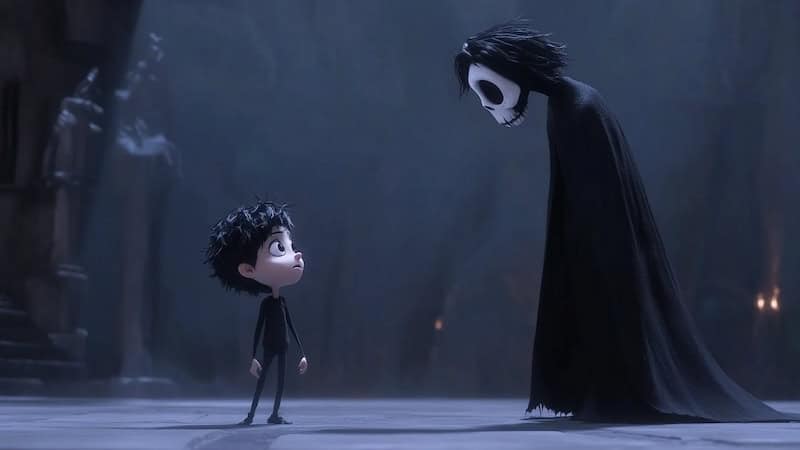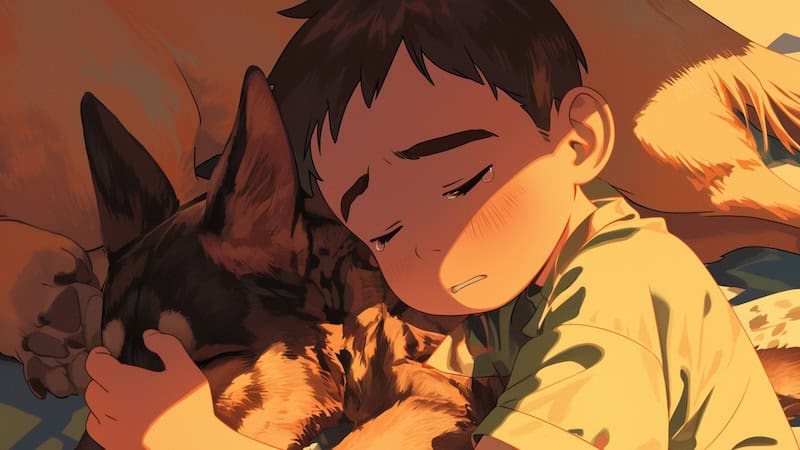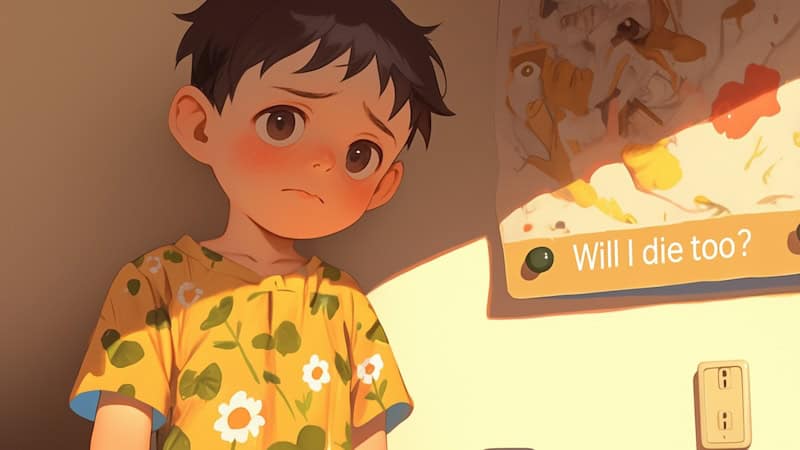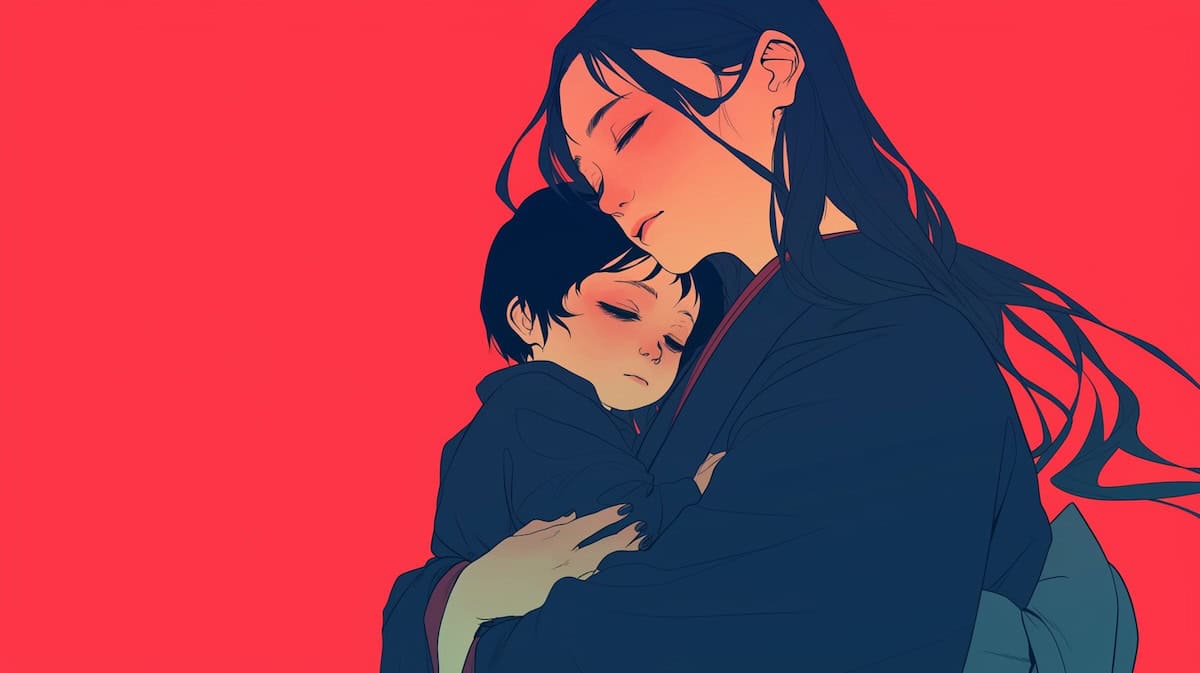As a parent, one of the hardest conversations we have to have is explaining death to a child. Whether it’s a pet, a family member, or even a public figure, talking to kids about death and delivering such sad news requires sensitivity, honesty, and the right words. This guide will help you navigate this tough topic and explain death to your child in a way that helps them understand, grow emotionally, and grieve healthily.
How Kids See Death

Before we get started, it’s important to understand how children understand death at different ages. Research shows that kids understand death differently as they grow:
• Many kids have their first experience with death between 5-7. This is when they start to develop a more adult understanding of death being permanent and irreversible.
• One study found the average age for a first death experience was 7.95 years old. But that’s just one data point and may not be the same for every child.
• Kids start to understand death is final around 4. A study found 58% of 4 year olds understand death is irreversible compared to 10% of 3 year olds.
• Between 5-7, kids usually get a more complete understanding of death, including non-functionality (dead bodies can’t function) and universality (all living things die).
Be Honest and Clear
When explaining death to your child, be honest. Helping a child understand death can be challenging, but it is crucial for their emotional development. Use simple, direct language that leaves no room for misinterpretation. Avoid euphemisms like “passed away,” “gone to sleep,” or “lost” as these can confuse kids and create fears around everyday activities like sleeping.
Being clear about what death means can help prevent confusion and give your child a more accurate understanding.
Instead, use clear statements like:
• “Grandpa has died. His body stopped working, and he can’t come back.”
• “When someone dies, their body doesn’t work. They can’t breathe, eat or feel anything anymore.”
It’s okay to say I don’t know when your child asks a question you can’t answer. If your child asks a question you can’t answer, say: “I’m not sure”
Emotions
Death brings a lot of emotions for both adults and kids. Talking about the deceased and sharing memories can help a child cope with their grief. Encourage your child to express their feelings openly and validate their emotions. Let them know it’s okay to feel sad, angry, confused or even relieved (in cases of long illness). Talking about the deceased and sharing memories can help a child grieve.
Share your own feelings too. This shows your child it’s normal to have big feelings about death and models healthy ways of grieving. Recognising and acknowledging your own emotions is key to supporting your child through this time. You might say something like: “I’m feeling very sad about Grandpa dying. It’s okay to cry when we’re sad.”
Explaining Death in Context
Using examples from nature can help kids understand death as part of life. You might talk about how leaves fall from trees in autumn or how insects have short lives. Explaining people die as part of life can help kids understand mortality. This can lead to conversations about life cycles and the natural order of living things.
If your child has had previous experiences with death (even minor ones like finding a dead insect), you can relate the current situation to that experience to help them understand.
Specific Situations
Pet Death
For many kids, the death of a pet is their first big loss. For younger kids using clear and simple language is especially important when explaining a pet’s death. Be honest about what happened, and let your child be involved in the remembering. You might say: “Fluffy was very old and her body stopped working. We can remember her by looking at pictures and talking about our favourite memories with her.”

Family Member or Friend’s Death
When explaining the death of a close family member or friend, be prepared for a range of reactions. A young person may have different questions and feelings about death than an older person. Some kids may seem unaffected at first and others may have big reactions. Be consistent and reassuring. You might say: “Uncle Tom died because he was very sick. We won’t see him again, but we can remember him by sharing stories about him.”
Terminal Illness and Euthanasia
For older kids who are aware of a loved one’s terminal illness or a pet’s declining health, you may need to explain euthanasia. Frame it as a kind choice to end suffering. For example: “The doctors have tried everything they can to make Grandma better, but her body is too sick. Soon she will die. The doctors can give her medication so she doesn’t feel any pain when this happens.”
Supporting How Young Children Grieve
Creating memorials or remembering activities can help kids process their grief. This might be making a photo album, planting a tree in memory of the deceased or doing art projects.
Reading age-appropriate books about death and loss can also be helpful. Here are a few:
“The Invisible String” by Patrice Karst – A bestseller about the connections that bind us together even after death.
“The Memory Box: A Book About Grief” by Joanna Rowland – Helps kids understand and cope with loss.
“The Rabbit Listened” by Cori Doerrfeld – About listening and being present for someone who’s grieving.
Stick to routines and offer extra comfort during grief. Kids find security in familiar schedules and physical touch.
If your child is really struggling, seek support from a mental health professional.
Common Questions and Concerns
Kids will have many questions as they try to understand death. Here are some common ones and how you might answer them:
“Will I die too?”
Answer honestly but reassuringly. “Yes, everyone dies eventually but most people live for a very long time. You’re young and healthy, so you’ll probably live for many, many years.”

“Where do people/animals go when they die?”
If you have religious or spiritual beliefs you can share them. If not you can say, “We don’t know for sure but many people believe…” and then explain some common beliefs. Always reassure the person or animal is no longer in pain or suffering.
Fears about sleeping or illness:
Some kids may develop fears about sleeping (if death has been described as “going to sleep”) or about minor illnesses. Address these fears directly: “Dying is very different from sleeping. When we sleep our body is still working, just resting. When someone dies, their body stops working completely.”
When to Get Professional Help
While grief is a normal process, some kids may need extra support. If your child shows these signs they may benefit from professional help:
Prolonged difficulty sleeping or eating
Persistent anxiety or depression
Regressive behaviours (like bedwetting) that don’t improve
Statements of wanting to die to be with the deceased
Significant changes in school performance or social interactions
If you see these signs, get in touch with a pediatric psychologist or grief counsellor who works with kids.
End
Explaining death to kids is never easy, but being honest, clear, and kind can help your child have a healthy understanding of life and death. Remember, grief is a process, not an event. Continue to have open conversations about death and loss as your child grows and experiences new things.
By creating a safe space where questions are welcome and feelings are validated you’re helping your child build resilience and coping skills that will serve them their whole life. While loss hurts, so does love and memory heal and grow.
There’s no one way to talk to kids about death. Each child is different and will understand and react differently. Be kind to yourself and your child as you navigate this tough topic together. With time, understanding and lots of love you can help your child have a healthy view of life, death and our time together.








